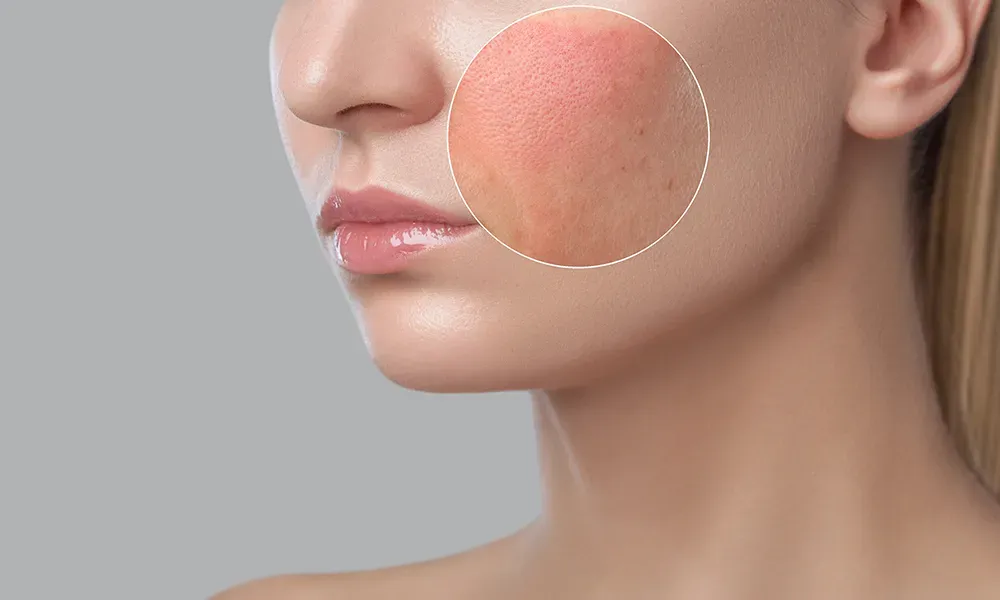Before focusing on treatment, it's vital to understand what melasma is. Melasma is a skin condition characterized by brown or grayish patches that typically appear on the face, particularly on the cheeks, forehead, upper lip, and chin. It is most common in women and is often triggered by sun exposure, hormonal changes (such as pregnancy or birth control use), and skin inflammation. Identifying your specific triggers is the first habit that can significantly boost the effectiveness of any melasma treatment. Keep a journal of lifestyle habits, skincare products, and environmental exposures to help pinpoint your triggers and manage flare-ups effectively.
Commit to Daily Sun Protection:
UV exposure is one of the biggest contributors to Melasma Treatment in Dubai (علاج الكلف في دبي). Even brief sun exposure can undo weeks of progress. Consistent and thorough sun protection is therefore essential. Apply broad-spectrum sunscreen every morning—even on cloudy days or when staying indoors, as UV rays can penetrate glass. Reapply every two hours if you’re outside, and consider wearing wide-brimmed hats, sunglasses, and clothing with UPF (Ultraviolet Protection Factor). Avoid sun exposure during peak hours (10 a.m. to 4 p.m.). Making sun protection a non-negotiable part of your daily routine can dramatically reduce recurrence and help your treatments work more effectively.
Choose a Gentle Skincare Routine:
Harsh products can aggravate melasma and cause increased pigmentation. Adopt a gentle skincare routine that supports skin healing and minimizes irritation. Use mild, fragrance-free cleansers, and avoid scrubbing your face aggressively. Look for moisturizers with ingredients that support the skin barrier, such as ceramides and hyaluronic acid. Exfoliate only with mild agents like lactic acid or mandelic acid, and do so sparingly—once or twice a week. By maintaining a calm and stable skin environment, your skin becomes more receptive to targeted melasma treatments.
Integrate Brightening Ingredients Wisely:
Brightening agents can improve melasma when used consistently and correctly. Popular active ingredients include niacinamide, vitamin C, azelaic acid, kojic acid, licorice extract, and arbutin. These substances work by reducing melanin production and evening out skin tone. Incorporate them slowly into your routine to assess your skin's tolerance. Combine actives cautiously to prevent irritation; for instance, use vitamin C in the morning and azelaic acid at night. Patience is key—visible results may take several weeks or even months, but the consistent use of these agents plays a major role in maximizing treatment success.
Prioritize Hormonal Balance and Nutrition:
Since hormonal changes are a key contributor to melasma, adopting habits that support hormonal balance can make a difference. If applicable, consider discussing hormone regulation strategies with your healthcare provider. Lifestyle adjustments—such as reducing stress, getting adequate sleep, and maintaining a healthy weight—can positively influence hormone levels. Nutrition also plays a role. A diet rich in antioxidants, omega-3 fatty acids, and anti-inflammatory foods supports overall skin health. Include colorful fruits and vegetables, green tea, and flaxseed in your meals. Staying hydrated and minimizing sugar and processed foods can also contribute to clearer, more even-toned skin.
Stay Consistent and Patient with Treatments:
Melasma is a stubborn condition that often requires long-term management rather than quick fixes. One of the best habits you can develop is consistency. Whether using topical treatments, undergoing in-office procedures, or relying on over-the-counter solutions, regular application or attendance is crucial. Skipping days or abandoning a routine too soon can lead to setbacks. Melasma may improve slowly, and it's common to go through cycles of improvement and relapse. Sticking to your treatment plan—even during periods when it seems like nothing is happening—greatly enhances your chances of long-term improvement.
Minimize Heat and Inflammation:
Heat—not just UV light—can worsen melasma. This includes heat from cooking, hot showers, saunas, and even intense workouts. Make small adjustments, such as turning your face away from the stove while cooking or lowering the temperature of your shower water. Similarly, any skin irritation or inflammation can aggravate melasma, so avoid over-exfoliating, picking at your skin, or trying new, untested products too frequently. Opt for soothing masks, calming serums, and cool compresses to manage redness or sensitivity. Keeping your skin cool and calm promotes healing and prevents the dark patches from deepening.
Track Progress and Adjust Mindfully:
Monitoring your melasma journey helps you understand what’s working and what’s not. Take clear, consistent photos in natural lighting every couple of weeks to track changes. Notice whether specific habits, products, or lifestyle changes lead to improvement or flare-ups. Use this information to make informed adjustments. However, avoid making drastic changes too quickly. Introduce new habits or products one at a time to observe their effects clearly. Additionally, understand that melasma can fade slowly and may never disappear entirely. The goal is to control and manage it over time. A balanced mindset and realistic expectations can help you stay motivated and reduce stress—which, in turn, can help keep melasma at bay.
Conclusion:
Melasma Treatment in Dubai (علاج الكلف) success is not just about applying a cream or undergoing a procedure—it’s about adopting supportive, sustainable habits that align with your skin’s needs. From religious sun protection and gentle skincare to hormone-balancing lifestyle choices and mindful progress tracking, these daily practices work synergistically to boost the effectiveness of melasma treatments. Empower yourself with knowledge, stay committed, and treat your skin with the patience and care it deserves.





Comments